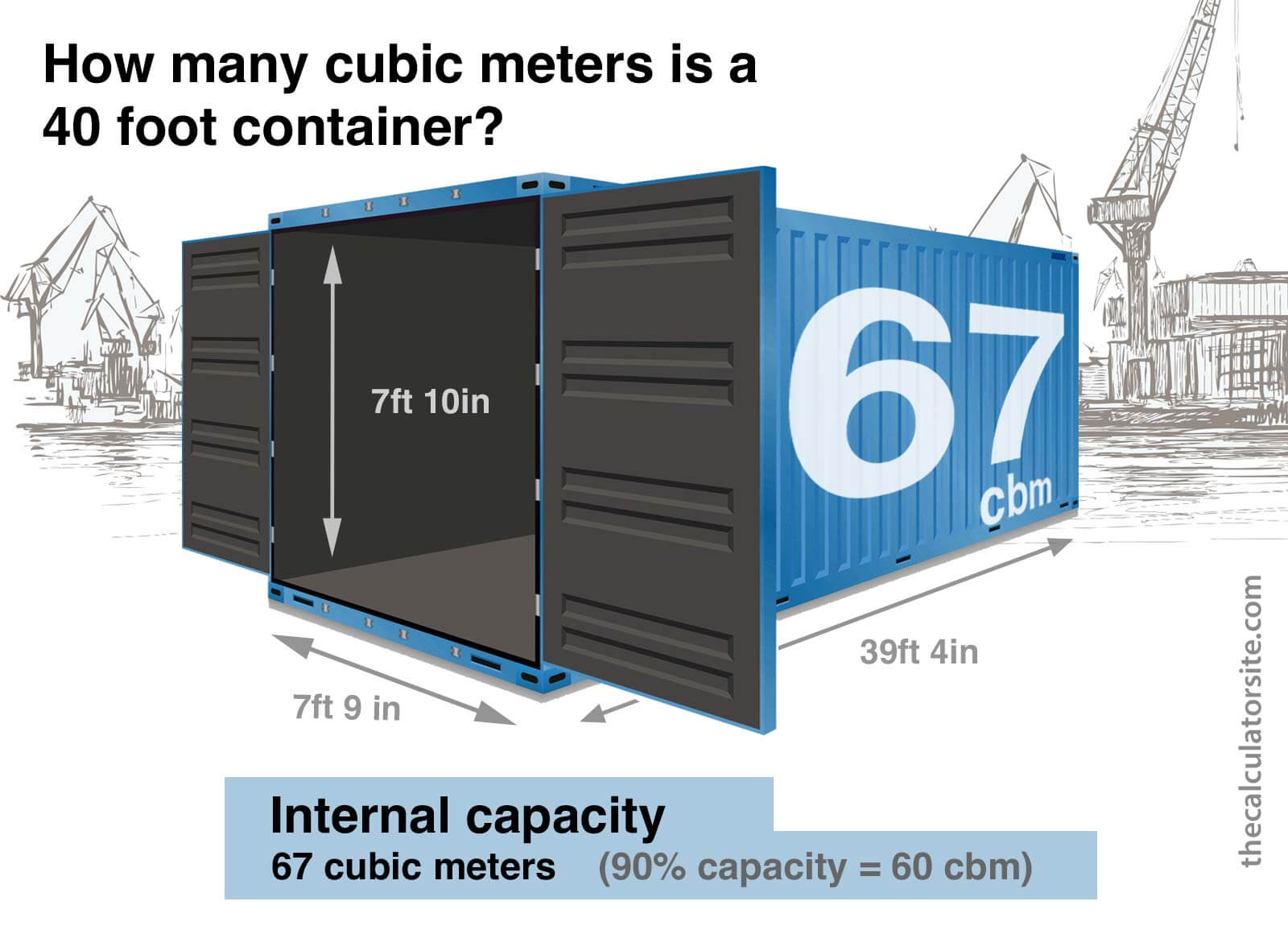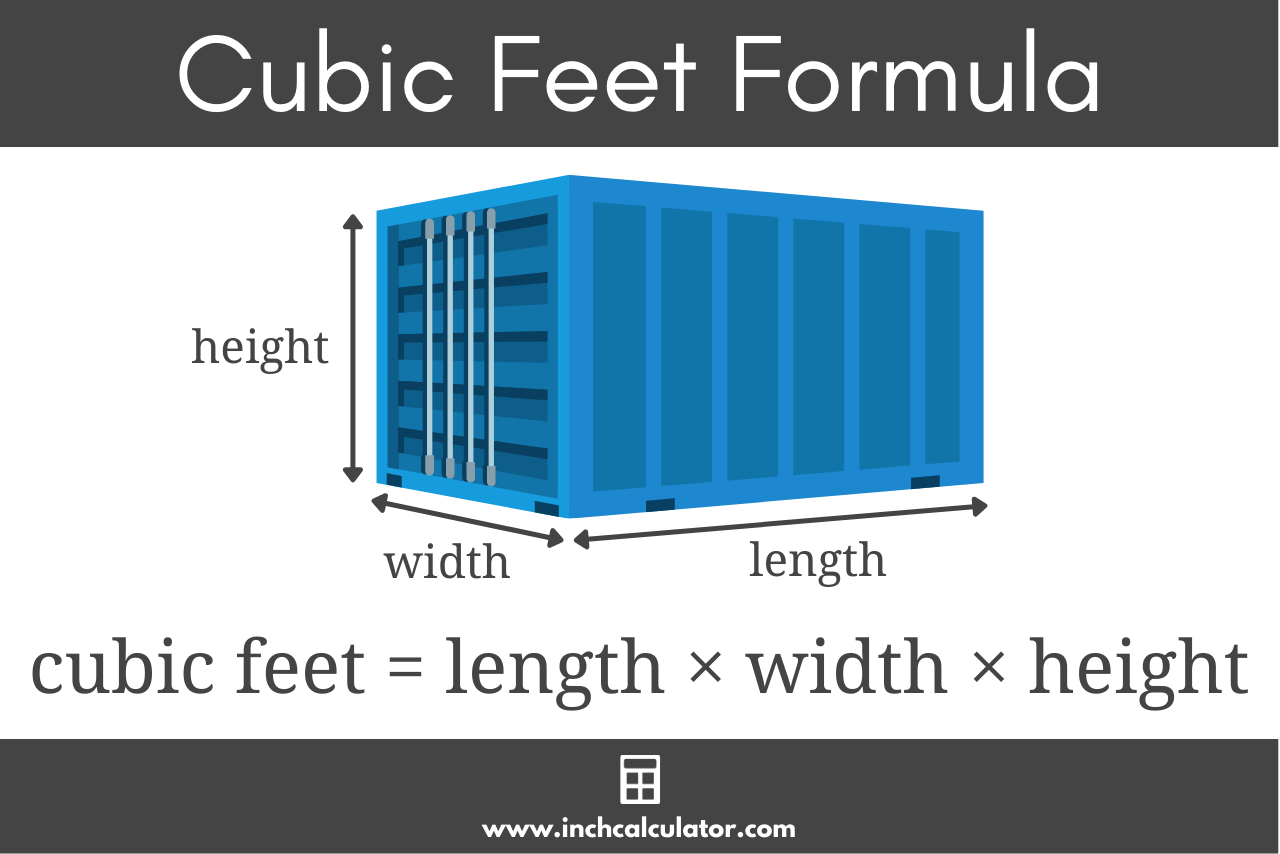How Much Cubic Space In A Truck: A Comprehensive Guide to Maximizing Your Load
How Much Cubic Space In A Truck: A Comprehensive Guide to Maximizing Your Load cars.truckstrend.com
In the world of moving, logistics, and transportation, understanding "how much cubic space in a truck" isn’t just a technical detail; it’s the cornerstone of efficiency, cost-effectiveness, and successful operations. Cubic space, simply put, is the total three-dimensional volume available inside a truck’s cargo area, calculated by multiplying its internal length, width, and height. Whether you’re a homeowner planning a DIY move, a small business owner shipping goods, or a logistics professional optimizing fleet usage, grasping this concept is paramount.
The capacity of a truck dictates how much you can transport in a single trip, directly impacting fuel consumption, rental costs, labor hours, and overall project timelines. An accurate assessment prevents the frustrating scenario of having too little space and requiring multiple trips, or conversely, paying for excess space you don’t need. This guide will delve deep into everything you need to know about truck cubic space, from calculation basics to smart packing strategies, ensuring your next move or shipment is as smooth and economical as possible.
How Much Cubic Space In A Truck: A Comprehensive Guide to Maximizing Your Load
Understanding Cubic Space: The Foundation of Calculation
At its core, calculating cubic space is a straightforward geometric exercise. For a rectangular cargo area, the formula is:
Cubic Space = Length (L) x Width (W) x Height (H)
- Length (L): The measurement from the front to the back of the cargo area.
- Width (W): The measurement from one side to the other.
- Height (H): The measurement from the floor to the ceiling of the cargo area.

The standard units for expressing cubic space are cubic feet (cu ft) in the United States and cubic meters (m³) in countries using the metric system. It’s crucial to use consistent units for all measurements (e.g., all in feet for cubic feet, or all in meters for cubic meters) to ensure an accurate calculation.
It’s vital to remember that these measurements refer to the internal dimensions of the truck’s cargo bay, not its external size. Factors like wheel wells, internal structural elements, and the ramp mechanism can slightly reduce the usable space, so always measure the actual clear space available.
Why Knowing Your Truck’s Cubic Space Matters Immensely
Understanding the cubic capacity of a truck offers a multitude of benefits, translating directly into tangible savings and improved operational efficiency:
- Optimized Load Efficiency: Knowing the exact volume allows you to plan your packing meticulously. You can maximize every inch, reducing the number of trips required for a move or shipment. This is particularly crucial for long-distance hauls where multiple trips are impractical and costly.
- Significant Cost Savings: Fewer trips mean less fuel consumption, lower mileage charges (for rentals), and potentially reduced labor costs. If you’re renting a truck, selecting the right size prevents paying for unused space or incurring surcharges for going over capacity. For businesses, optimizing cubic space directly impacts shipping rates and supply chain expenses.
- Enhanced Safety: Overloading a truck, either by weight or volume, is a significant safety hazard. Knowing your truck’s cubic limits helps prevent unsafe conditions like poor handling, extended braking distances, and potential damage to the vehicle or cargo. It also ensures proper weight distribution, which is critical for vehicle stability.
- Precise Planning and Inventory Management: For personal moves, you can accurately estimate how many boxes and pieces of furniture will fit, reducing last-minute stress. For businesses, it aids in inventory management, warehouse planning, and determining optimal shipment sizes, streamlining logistics from start to finish.
- Regulatory Compliance: Commercial operations often face strict regulations regarding vehicle capacity and weight limits. Understanding cubic space is a part of ensuring compliance, avoiding fines, and maintaining a good safety record.

Types of Trucks and Their Typical Cubic Capacities
Trucks come in various sizes, each designed for different hauling needs. Here’s a breakdown of common truck types and their approximate cubic capacities:
- Pickup Trucks: While not primarily designed for enclosed cubic volume, the bed offers limited open space. With a bed cap, they can provide 36-80 cubic feet (1-2.2 m³). Ideal for small, open-air loads.
- Cargo Vans (e.g., Ford Transit, Mercedes Sprinter): These enclosed vans are popular for local deliveries and small moves. They typically offer 250-500 cubic feet (7-14 m³) of space, depending on the model and wheelbase.
- Small Box Trucks (e.g., 10 ft U-Haul): Often the smallest dedicated moving trucks, perfect for studio apartments or small offices. They provide around 350-400 cubic feet (10-11 m³).
- Medium Box Trucks (e.g., 15-17 ft U-Haul/Penske): A popular choice for 1-2 bedroom apartments or small houses. Capacities range from 800-900 cubic feet (22.6-25.5 m³).
- Large Box Trucks (e.g., 20-22 ft U-Haul/Penske): Suitable for 2-3 bedroom homes. These trucks typically offer 1,200-1,400 cubic feet (34-40 m³).
- Extra-Large Box Trucks (e.g., 26 ft U-Haul/Penske): The largest consumer rental trucks, designed for 3-4+ bedroom houses or large commercial moves. They boast capacities of 1,600-1,700 cubic feet (45-48 m³).
- Semi-Trailers (Dry Van): The workhorses of long-haul freight, these commercial trailers come in 48-foot or 53-foot lengths. A 53-foot dry van can hold an impressive 3,400-4,200 cubic feet (96-119 m³), depending on internal configuration.
Practical Guide: How to Measure Cubic Space in Your Truck
Even if you know the manufacturer’s specifications, it’s always a good idea to measure your truck’s cargo space yourself, especially for older vehicles or those with custom modifications.
- Clear the Cargo Area: Ensure the truck’s cargo bay is empty and clear of any obstructions.
- Measure the Length: Using a reliable tape measure, measure the internal length from the very front of the cargo area to the very back door. Take multiple measurements if the shape isn’t perfectly uniform.
- Measure the Width: Measure the internal width from one side wall to the other. Be mindful of wheel wells, which often protrude into the space; measure the narrowest point if these are significant.
- Measure the Height: Measure the internal height from the floor to the ceiling. Again, look out for any interior lights, air vents, or structural beams that might reduce usable vertical space.
- Account for Irregularities: If your truck has significant internal irregularities (e.g., sloped walls, a curved roof), you might need to make approximations or break the space into simpler geometric shapes and sum their volumes. For most standard box trucks, the internal dimensions are largely rectangular.
- Calculate: Once you have your L, W, and H measurements (in feet or meters), multiply them together to get your cubic feet or cubic meters.
- Use Online Tools: Many moving company websites and general online calculators offer tools where you can input your dimensions to quickly calculate cubic space.
Optimizing Your Truck’s Cubic Space: Smart Packing Strategies
Knowing your truck’s volume is only half the battle; how you pack it determines how much you can actually fit. Efficient packing strategies are crucial:
- Load Heaviest Items First: Place the heaviest boxes and furniture items on the floor of the truck, closest to the cab. This helps distribute weight evenly and prevents instability.
- Utilize Vertical Space: Stack boxes and items as high as possible, ensuring they are stable and won’t tip over. Use uniform box sizes to make stacking easier and more secure.
- Fill All Voids: Use smaller boxes, blankets, pillows, or even clothing to fill empty spaces between larger items. This prevents items from shifting during transit, reducing the risk of damage.
- Disassemble When Possible: Take apart beds, tables, and other large furniture pieces. This makes them easier to maneuver and allows you to pack components more compactly.
- Protect Fragile Items: Wrap fragile items thoroughly and place them strategically where they won’t be crushed. Don’t stack heavy items on top of fragile ones, regardless of cubic space.
- Create an "Aisle": If possible, leave a narrow pathway to access items during loading or unloading, especially if you’re making multiple stops.
- "Cube Out" vs. "Weight Out": Understand that a truck has both a cubic capacity and a weight limit. You might "cube out" (fill the space) before you "weight out" (reach the maximum allowed weight), or vice versa. Always prioritize staying within the weight limit for safety and legal compliance.
Challenges and Important Considerations
- Irregularly Shaped Items: Furniture, bicycles, and appliances don’t always fit neatly into rectangular boxes. Factor in their unique dimensions and allocate extra space for their awkward shapes.
- Weight Limits: Cubic capacity doesn’t automatically mean you can load to that volume. Every truck has a Gross Vehicle Weight Rating (GVWR) that must not be exceeded. Always check this and ensure your total loaded weight is below it.
- Accessibility: Consider the size of the truck’s door opening and the ramp. Extremely large items might fit inside the truck but be impossible to load through the opening.
- Climate Control: If transporting sensitive items like electronics, plants, or certain artworks, consider whether the truck offers climate control, as temperature and humidity can impact the usable cubic space for such goods.
- Tie-Downs and Padding: Regardless of how well you pack, items can shift. Use tie-down straps, ropes, and moving blankets to secure your load and protect surfaces, ensuring the integrity of your cubic space utilization.
Table of Typical Truck Cubic Capacities and Estimated Rental Information
This table provides a general overview of common truck types, their typical cubic capacities, and approximate daily rental cost ranges for consumer vehicles. Prices are highly variable and subject to change based on location, demand, duration, mileage, and insurance.
| Truck Type | Approx. Interior Dimensions (L x W x H) | Typical Cubic Feet (Cu Ft) | Typical Cubic Meters (m³) | Est. Daily Rental Cost Range (Consumer) | Key Use Cases |
|---|---|---|---|---|---|
| Pickup Truck | 6-8 ft x 4-5 ft x 1.5-2 ft (bed only) | 36 – 80 | 1 – 2.2 | $30 – $70 | Small loads, DIY projects, light hauling |
| Cargo Van | 10-14 ft x 5-6 ft x 5-6 ft | 250 – 500 | 7 – 14 | $40 – $90 | Local deliveries, small apartment moves |
| 10 ft Box Truck | 9.5 ft x 6 ft x 6 ft | ~350 | ~10 | $20 – $40 + mileage | Studio/1-bedroom apartment, small office |
| 15 ft Box Truck | 14.5 ft x 7.5 ft x 7 ft | ~800 | ~22.6 | $30 – $60 + mileage | 1-2 bedroom apartment/small house |
| 20 ft Box Truck | 19.5 ft x 7.5 ft x 8 ft | ~1200 | ~34 | $40 – $80 + mileage | 2-3 bedroom house, larger office |
| 26 ft Box Truck | 25.5 ft x 8 ft x 8 ft | ~1600 – 1700 | ~45 – 48 | $50 – $100 + mileage | 3-4+ bedroom house, large commercial moves |
| Semi-Trailer (Dry Van) | 48-53 ft x 8.5 ft x 8.5-9 ft | ~3,400 – 4,200 | ~96 – 119 | N/A (Commercial Freight Only) | Large volume freight, long-haul shipping |
Note: Rental costs are estimates and do not include insurance, fuel, environmental fees, or other potential surcharges. Always get a detailed quote.
Frequently Asked Questions (FAQ) About Truck Cubic Space
Q1: What’s the difference between cubic feet and cubic meters?
A1: Both are units of volume. Cubic feet (cu ft) are commonly used in the United States, while cubic meters (m³) are used in countries following the metric system. 1 cubic meter is approximately equal to 35.3147 cubic feet.
Q2: How do I estimate how much cubic space I need for my move?
A2: Many moving companies offer online "space estimators" where you list your items, and they provide an estimated cubic footage. As a rough guide: a studio apartment often needs a 10-15 ft truck, a 1-2 bedroom apartment a 15-20 ft truck, and a 3-4+ bedroom house a 20-26 ft truck. Always err on the side of slightly more space than you think you need.
Q3: Does the weight limit matter more than cubic space?
A3: Yes, the weight limit (GVWR) is paramount for safety and legal reasons. You must never exceed the truck’s maximum allowed weight, even if there appears to be empty cubic space remaining. Overloading can lead to accidents, fines, and vehicle damage.
Q4: Can I use an online calculator to determine my truck’s cubic space?
A4: Yes, many online calculators are available. You simply input the internal length, width, and height of your truck’s cargo area, and it will calculate the cubic space for you. This is a quick and convenient way to verify your manual measurements.
Q5: What if my items are oddly shaped?
A5: Oddly shaped items reduce the overall efficiency of your cubic space utilization. Try to disassemble them if possible. Otherwise, plan to place them strategically to minimize wasted space around them, and use blankets or smaller items to fill awkward gaps.
Q6: How can I maximize the space in a truck effectively?
A6: To maximize space, load heaviest items first, low and centered. Utilize vertical space by stacking sturdy, uniform boxes. Fill all voids with smaller items, soft goods, or packing materials to prevent shifting. Disassemble large furniture, and use tie-downs to secure the load.
Conclusion
Understanding "how much cubic space in a truck" is a foundational element for anyone involved in moving or logistics. It’s not just about fitting items into a confined area; it’s about making informed decisions that lead to greater efficiency, significant cost savings, and enhanced safety. By grasping the basics of cubic calculation, knowing the capacities of different truck types, and employing smart packing strategies, you can transform a potentially stressful undertaking into a streamlined and successful operation. Always measure, plan, and prioritize safety, and your truck will become an incredibly powerful tool for transporting your goods, no matter the scale.






